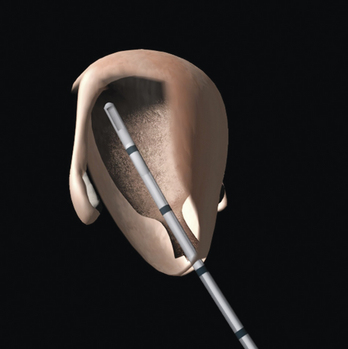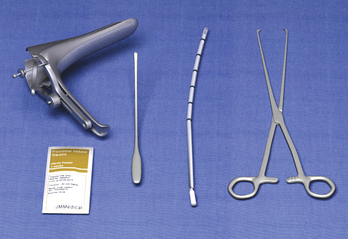Chapter 25 Endometrial Biopsy
Common indications
An endometrial biopsy performed with a Pipelle catheter is an efficient way to sample the endometrium of the uterus with minimal discomfort to the patient (Figure 25-1). The most common reasons for performing an endometrial biopsy are to assess dysfunctional uterine bleeding and postmenopausal bleeding. Ensure that the patient is not pregnant before performing this procedure.
Equipment
The equipment for the procedure includes a speculum, a uterine sound, and a Pipelle catheter. A tenaculum may be necessary if the cervix is stenotic and countertraction is needed (Figure 25-2).
Key steps
1. Preparation: Place the patient in the lithotomy position. Perform a bimanual exam to determine the orientation and size of the uterus. Insert a speculum, and visualize the cervix. Cleanse the cervix with antiseptic solution (Figure 25-3).
2. Catheter insertion: Use the uterine sound to dilate the os in most patients. You may first attempt to insert the Pipelle catheter if the os does not appear stenotic. Avoid contaminating the catheter on the vaginal sidewalls. Insert the catheter into the os to the fundus of the uterus. Countertraction using a tenaculum that is placed across the anterior lip of the cervix may be necessary if the os is firmly closed. The Pipelle catheter can be used as a sound to measure the depth of the uterus (Figure 25-4).
Stay updated, free articles. Join our Telegram channel

Full access? Get Clinical Tree




